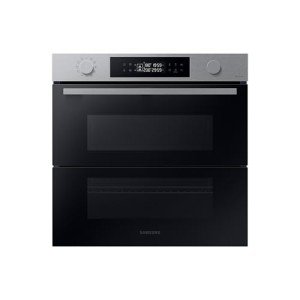The Rise of Built-In Ovens: A Seamless Approach to Modern Cooking
In modern kitchens, where design visual appeals blend effortlessly with functionality, one device sticks out as a true video game changer: the built-in oven. As homeowners and chefs alike continue to look for ingenious solutions that boost their cooking experience, built-in ovens have ended up being increasingly popular. This post checks out the advantages, factors to consider, and trends surrounding built-in ovens, highlighting why they are an important function in modern-day cooking spaces.
What is oven integrated -In Oven?
A built-in oven is a cooking area device created to be integrated into the cabinets of a kitchen area instead of standing alone. Unlike conventional freestanding ovens, which can be moved and positioned anywhere, built-in ovens can be found in various styles and sizes to fit specifically within designated areas. Readily available in single or double configurations, these ovens provide a streamlined appearance that matches contemporary kitchen designs.
Advantages of Built-In Ovens
1. Space-Saving Design
Among the most attractive benefits of built-in ovens is their space-saving style. By integrating the oven into cabinetry, you can maximize important counter and flooring area. This is particularly helpful in smaller kitchens, where maximizing space is essential. Built-in ovens can be set up at eye level, making them more available and lowering the need to bend down.
2. Visual Appeal
Built-in ovens add to a smooth and cohesive kitchen design. Offered in numerous surfaces-- such as stainless steel, black, white, and customized cabinetry-- they can mix flawlessly into the total decor. This aesthetic appeal improves the kitchen area's visual consistency and raises the area, creating a modern-day and advanced environment.

3. Enhanced Functionality
Many built-in ovens come geared up with sophisticated cooking innovations, such as convection cooking, steam ovens, and wise features. These improvements enable for flexible cooking choices, making it simpler to achieve professional-level outcomes in the house. Smart built-in ovens can even connect to Wi-Fi, making it possible for users to manage the oven from another location, receive notifications, and access a range of cooking programs and recipes.
4. Enhanced Ventilation
Because built-in ovens can be integrated with kitchen area hoods and ventilation systems, they can assist preserve much better air quality and decrease cooking smells. This is specifically significant for those who enjoy to prepare with aromatic spices and ingredients, as an efficient ventilation system can keep the kitchen area comfortable and welcoming.
5. Customization Options
Built-in ovens provide a large range of personalization alternatives to match private cooking styles and needs. From professional-grade home appliances with multiple cooking modes to compact designs for smaller kitchen areas, house owners can select the oven that fits their specific requirements. Numerous makers also provide personalized front panels, enabling you to match the oven's look to your kitchen cabinetry for a really combined appearance.
Considerations When Choosing a Built-In Oven
While built-in ovens have lots of benefits, there are very important considerations to bear in mind before purchasing:
1. Price
Built-in ovens usually feature a greater price than their freestanding counterparts due to their design and setup requirements. It's crucial to aspect in both the cost of the oven and any extra expenditures associated with kitchen cabinetry modifications or setup.
2. Setup Requirements
Setting up a built-in oven typically requires expert assistance, specifically if you need to modify existing cabinets. Ensure that you consider any expenses associated with setup, consisting of labor and possible cabinetry adjustments.
3. Size and Dimensions
Before purchasing a built-in oven, measure the designated space accurately to make sure a correct fit. Built-in ovens can be found in various sizes and configurations, so selecting one that aligns with your needs and cooking area style is important.
4. Lifestyle and Usage
Consider your cooking routines and requires when picking a built-in oven. If you often host large gatherings, a double oven may be more advantageous. On the other hand, if you have a compact cooking area, a single-wall oven may be enough.
Patterns in Built-In Ovens
The cooking area device market is continuously evolving, and built-in ovens are not exempt from emerging patterns. Some existing patterns consist of:
Smart Technology Integration: With the rise of smart home innovation, built-in ovens now typically feature connectivity alternatives. This enables users to monitor cooking development and adjust settings through mobile apps.
Energy Efficiency: As sustainability ends up being a priority, numerous makers are buying energy-efficient built-in ovens that lower energy consumption while preserving efficiency.
Multi-functional Designs: Built-in ovens now provide features such as air frying, slow cooking, and steaming, providing versatility that meets a large range of cooking methods.
Conclusion
Built-in ovens undoubtedly represent an ideal blend of style, function, and convenience in today's cooking areas. As more homeowners choose this modern-day option, the focus moves to developing a cooking area that is as visually pleasing as it is useful. Whether you are constructing a new home or remodeling your kitchen, considering a built-in oven could elevate your culinary experience and transform your kitchen into a trendy and functional haven. With a selection of choices available and continuous innovations in technology, built-in ovens stay a standout option for both beginner cooks and cooking lovers alike.
